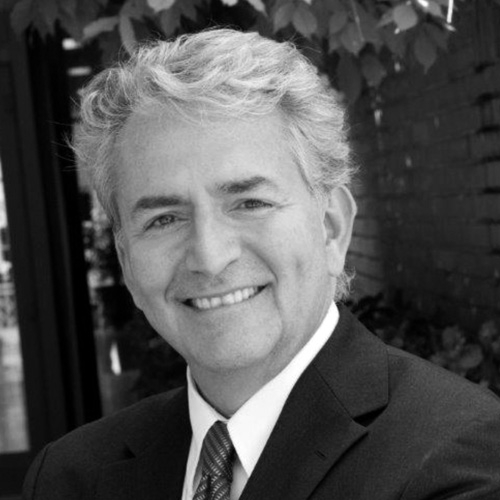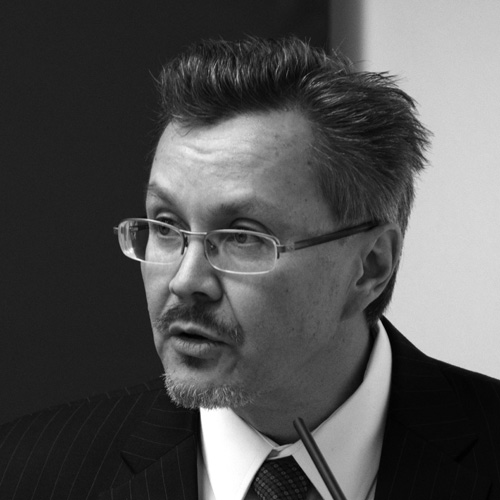Eugene Young
Whitsun Dialogue conference at Schloss Seggau,
May 31, 2017, Leibnitz, 6 p.m.
Herr Vizekanzler, Herr Landeshauptmann, Herr Bischof, Herr Superintendent, sehr geehrte Landesraete, Magnifizenz, sehr geehrten Damen und Herren:
Ich freue mich sehr, dass ich heute beim Pfingstdialog in diesem schönen Schloss sein darf.
Ich bin immer sehr gern in der Steiermark, vor allem wenn ich zum Thema Europa-USA ein Paar Bemerkungen machen kann.
Aber, wenn Sie gestatten werde ich das aber auf Englisch tun.
Ladies and gentlemen, thank you for the invitation to join you here today.
This 7th Whitsun Dialogues is a timely opportunity to reflect on the accomplishments of the Transatlantic Partnership as well as summon that spirit to renew our commitment to that partnership.
Earlier this month, Secretary of State Tillerson used the occasion of Europe Day to affirm that “The United States and the European Union have a strong and enduring partnership based on our shared democratic values, strong economic ties, and mutual commitment to addressing global challenges.”
LEGACY
If I may, I would also add that what Secretary Tillerson is speaking about is very much based on the legacy of the Marshall Plan and our joint efforts to build a Europe that is whole, free and at peace.
70 years ago next Monday, U.S. Secretary of State George C. Marshall addressed the graduating class of Harvard University. He used the occasion to call for the largest aid program in American history to revitalize the economies of a continent ravaged by war.
Of course, that program is what we now call the Marshall Plan — a plan that was absolutely visionary in its design and execution.
Here on this beautiful hilltop in one of the most prosperous countries on Earth, many of us here can hardly imagine what Austria was like 70 years ago in the wake of one of the darkest moments in human history.
Almost everyone in this room has either witnessed first hand or heard family stories about how truly bleak life was in post-war Austria and Europe as a whole.
On the other side of the Atlantic, Americans were ready to leave the war years behind.
Indeed, there were some who opposed Secretary Marshall’s plan.
They were convinced it would damage the American economy – and that argument appealed to many who were weary of wartime sacrifices, ration cards and high taxes.
Supporters of the plan, led by President Truman, started what we would call today a media blitz.
They testified in Congress, spoke at public meetings and organized presidential commissions to explain the value of the Marshall Plan as a creative act of statesmanship that would reverse the economic declines in Europe by being a hand up – not a handout.
Oder Hilfe zur Selbsthilfe.
After four months of debate, Congress passed the Economic Cooperation Act in the spring of 1948.
Over the course of the next four years, $13 billion dollars of assistance began to move across the Atlantic.
That represented about $80 dollars from every American, which at the time was about 2-weeks’ worth of wages for a skilled worker.
The first ship left Texas bound for France with 19,000 tons of wheat.
That was followed by fuel, raw materials and industrial equipment and an army of technical experts who worked side-by-side with their European counterparts.
That last fact is important to note because at its heart, the Marshall Plan was a joint venture with Europe.
The results of this tremendous investment in transatlantic partnership were staggering.
In Austria, the Marshall Plan funded a huge array of major reconstruction and development projects.
Austria was actually the second-largest beneficiary of Marshall Plan Funds per capita, receiving $133 worth of assistance for every Austrian.
The Marshall Plan helped bring the Kaprun hydroelectric power plant in Salzburg into operation and expand VÖEST, the United Austrian Iron and Steelworks plant, outside of Linz.
Right here in Styria, Marshall Plan funds were used to import the wool used by the Loden Steiner company to make their now world renowned Loden fabric.
The Marshall Plan was also key to the modernization of the tourism industry; 229 enterprises received financing for construction and infrastructure improvements.
Marshall Plan financing for the agricultural sector was equally important.
ERP credits helped 99 refugee families buy or lease land in Styria and establish their businesses right here.
ERP funds also advanced electrification of farms and rebuilt the agriculture school in Grottenberg-Herdt and the Winery Technology School in Silberberg.
Finally, the Marshall Plan made sure Styria remained the gruene Mark.
Marshall Plan funds helped to reforest 4000 hectares and built 388 kilometers of roads and introduced modern processing equipment to make the forestry industry in Styria more efficient – and thus more competitive.
PARTNERSHIP
In 1966, President Lyndon Johnson spoke admiringly of the Austrian post-war reconstruction, saying
“While the Marshall plan did help provide some of the financial resources that were needed during that time, we know that the real heart of this effort–the backbone of it all–was the strength, the fortitude, and the endurance of the Austrian people.
We stood here and watched with great admiration as they transformed the ruins of war into a modern and prosperous nation.
We did try to help where we could and when we could.
But the spirit and the energy which rebuilt your cities and factories and roads and schools were yours.”
I also want to add something many folks don’t know.
The Marshall Plan endures.
Indeed, it still supports small and medium sized business in Austria.
In 1962, the remaining money was transferred to the Austrian government; today the €3bn fund is used to invest in innovation across a diverse array of industries, from tourism to high tech through the Austrian Wirtschaftsservice.
And in 2008, these funds also created the Marshall Plan Foundation, which supports educational exchange between Austria and the United States.
EUROPEAN COOPERATION
The Marshall Plan didn’t only transform relations between the United States and Europe.
It also changed the way European nations related to each other.
The Organization for European Economic Cooperation was created to work with the U.S. to implement the Marshall Plan. That set the stage for the birth of the Council of Europe, through to the European Payments Union, the Schuman Plan and the coal and steel community that grew out of it, and then ultimately to the European Economic Community.
It was through the Marshall Plan that America and Europe understood and demonstrated that peace, prosperity and security are achieved through partnership and cooperation.
The United States and the European Union are partners promoting peace, security, human rights, and prosperity in Europe and around the world.
The European Union has stood with us on a full range of international security issues and is an increasingly important partner in countering terrorism and extremism.
We work closely with the European Union in the Middle East, Africa, and Asia and coordinate our humanitarian assistance around the world.
We are committed to NATO and unwavering in our support for a strong trans-Atlantic security alliance.
These bonds are built on a legacy of common commitments and common defense, and we never forget that in our embassy in Vienna.
But these partnerships are not only played out in ministries and on television screens.
These partnerships are our people, our businesses, and countless institutions cooperate to achieve incredible things on both sides of the Atlantic.
In Graz, for example, the American Institute of Musical Studies introduces American musicians to European opera and has been a launching pad for countless musical careers since 1971.
The Fulbright Program was established in Austria in 1950 and is one of the oldest in the world.
It facilitates the exchange of students, researchers, and teachers between our two countries.
Last year Fulbright Austria issued 78 Fulbright awards and placed 152 US Teaching Assistants in Austrian secondary schools.
And the connections continue to grow.
The past two years have also born witness to the creation of two programs that are connecting Austrian youth with counterparts in the U.S.
Through the Austria to Austin Student Startup Exchange, we are sending the second cohort of young Austrian Entrepreneurs to Texas this July to start early stage companies and form bridges of innovation between the U.S. and Austria and just this year we launched Generation Next, which is sending young Austrian leaders in refugee and immigrant integration to the United States for leadership training.
The U.S. is the largest trading partner of the EU and vice versa, with over €600bn worth of goods and services exchanged between us annually.
The U.S. imports more from Austria specifically than any country besides Germany.
In 2016, nearly €9bn worth of Austrian products were purchased by Americans.
Many from right here in Styria.
We are so proud of that.
So as we reflect on what we have achieved together over the last 70 years, let us also affirm our commitment to our partnership. And our commitment to working with Europe for peace and security, for freedom and prosperity all around the world.
THE FUTURE
America remains committed. Never doubt that.
I know there has been much discussion of the new administration in the Austrian press.
And I also know there are concerns.
Let me address those concerns today.
Let me actually borrow the words of Secretary Tillerson.
Last month he addressed the employees of the State Department. He talked about his view of how you translate “America first” into our foreign policy.
He said, “I think I approach it really that it’s America first for national security and economic prosperity, and that doesn’t mean it comes at the expense of others.”
In other words, America first, not America only.
He stressed that our partnerships and our alliances are critical to our success in both of those areas.
He went on to say that our engagement with others is and will remain the key to our success.
And the key to finding mutual success.
We’re building our policies around those notions.
THE TEAM
That process is also being led by an incredible team of foreign policy leaders that President Trump has assembled:
In addition to Secretary Tillerson, Vice President Mike Pence, who has previously served both in the U.S. Congress and as the governor of the State of Indiana, brings expertise garnered from high level policy negotiation to bear on both the international and the domestic fronts.
And nobody is more qualified to lead our armed forces than Defense Secretary Jim Mattis, who previously commanded troops in Iraq and Afghanistan and led the U.S. Central Command.
Our UN Ambassador Nikki Haley, a member of the President’s cabinet, is the former governor of South Carolina – and the daughter of immigrants from India, is highly qualified to represent the interests of the U.S. and our allies. H.R. McMaster, is the President’s National Security Advisor.
He is a three-star general, graduate of West Point, decorated commander and PhD holder.
In short, President Trump has assembled a strong, talented, and experienced group of leaders to guide U.S. foreign policy in his administration, and he has given them a mandate to build strategic partnerships around the globe to better face the challenges of the 21st century.
These are new leaders but our core commitments remain the same.
We will remain a guarantor of sovereignty here and around the globe and will continue to facilitate peace and stability.
We will remain Europe’s partner and friend.
For 70 years we have stood together in Europe and around the world to advance our common values and our shared interests. We trade with each other more than any two economies in the world.
Our mutual trade and investments, which account for almost half of global output and one-third of world trade, reinforce these strong ties and create millions of jobs on both sides of the Atlantic.
And the cultural bond between our peoples unite us and our common vision for the future drive us forward.
Thank you again for the invitation to join you today.
I look forward to an interesting discussion with you.
Vielen Dank für Ihre Aufmerksamkeit. Ich wünsche Ihnen einen spannenden Pfingstdialog.




